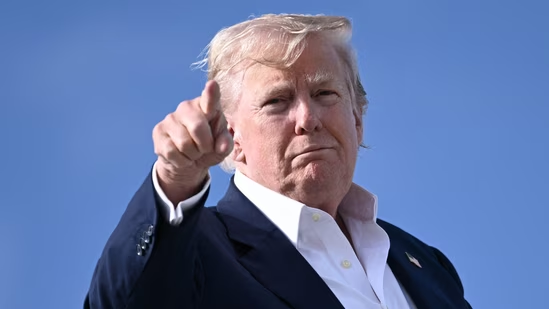
Trump
On August 8, 2025, President Donald Trump issued a stark warning to the judicial branch: striking down his sweeping tariff policies could plunge the U.S. into a “1929-style Great Depression” . The analogy, evoking the darkest era of American economic history, underscores the high stakes in the unfolding legal battle over executive authority in trade policy.
The Tariff Offensive: A Bold Economic Bet
This declaration came just hours after the implementation of a fresh round of tariffs—10% or more on goods from over 60 countries and the European Union, with targeted duties of 15% on imports from the EU, Japan, and South Korea, and as high as 50% on Indian goods following added surcharges. The administration heralded these measures as boosting the stock market and swelling government revenues, presenting them as essential tools to restore U.S. economic independence .
From the president’s perspective, these tariffs aren’t just economic instruments—they are pillars of his “America First” strategy, aimed at reshoring manufacturing, correcting trade imbalances, and reasserting executive power in global commerce.
Judicial Roadblocks: IEEPA Under Fire
Trump’s justification rests largely on the International Emergency Economic Powers Act (IEEPA), a Cold War–era law invoking emergency powers to justify sweeping economic measures. But the courts are not convinced. In late May, the U.S. Court of International Trade struck down Trump’s “Liberation Day” tariffs, ruling they exceeded the authority granted under IEEPA and violated constitutional norms such as the major questions doctrine.
While the administration swiftly appealed, the legal framework is entering uncharted territory. As one analysis put it, “a stark warning to courts who might stand in the way of his tariffs policy” is an ominous signal of confrontation. Trump’s rhetoric seemed aimed not just at courts—but at building a narrative of economic threat should his trade agenda be blocked.
Echoes of 1930: A Historical Caution
The specter of the Great Depression is not invoked lightly. The Smoot–Hawley Tariff Act of 1930, enacted amid the depths of the Depression, raised U.S. import duties dramatically—resulting in a collapse of global trade and deepening the economic crisis .
Economists caution that today’s tariffs, while different in context, carry analogous risks. Global trade declines, inflation, and retaliatory measures could foster stagnation or even recession. One strategist warned that markets may be “too optimistic,” with investors banking on domestic resilience as tariff levels approach the highest since the early 20th century .
Others point out that while tariffs may signal toughness, they could also sow uncertainty—hurting businesses, raising costs for consumers, and disrupting global supply chains .
Political Theater or Strategic Gambit?
Trump’s dramatic framing of a possible judicial-blocked tariff as precipitating a new Depression can be seen as more than hyperbole—it’s a strategic gambit. By casting courts as the trigger of economic collapse, he may be laying the groundwork for reinforcing executive power while rallying political support.
Critics, however, see this as dangerous brinkmanship. They argue that invoking economic catastrophe if his terms aren’t met elevates judicial decisions into existential threats, polarizing public sentiment and undermining the rule of law.
The Road Ahead: Market Volatility and Legal Uncertainty
As appeals progress, stakes remain high. If courts curtail his tariff powers, Trump may attempt pivots—seeking alternative legal authority or rhetorical reframing. Meanwhile, markets and allies are watching closely, wary that aggressive protectionism and weakened institutions could collide.
History offers a sobering lesson: the 1930 tariff response deepened the Great Depression. If courts strike down Trump’s tariff regime, it may not usher in another economic collapse—but it could escalate economic and institutional friction to a precarious level.
Thanks For Reading